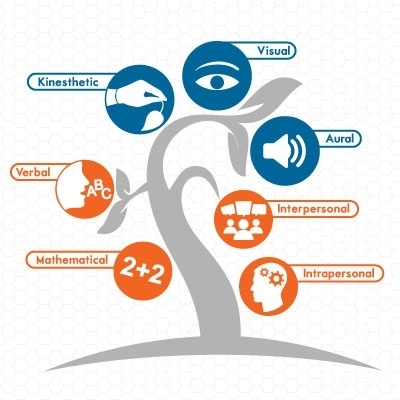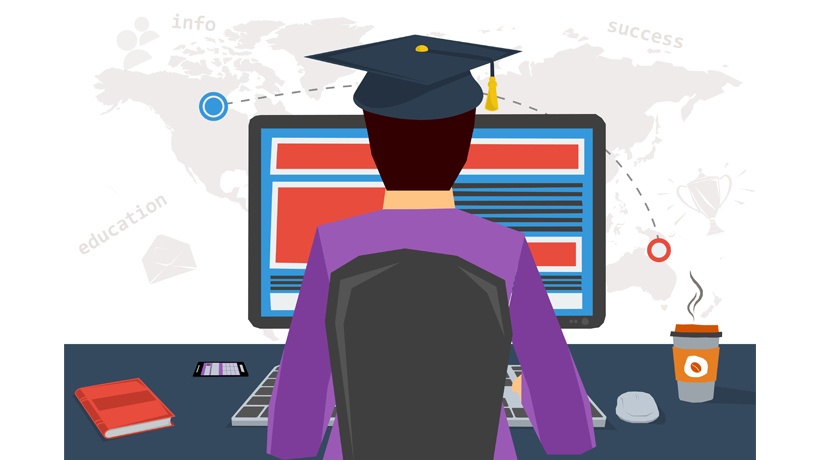Create Online Courses For Different Types Of Learners
Many online students become frustrated when they are confronted with a course consisting mainly of text and occasional images. This sort of "flat" classroom may work well with verbal learners, but students who have other learning styles may find learning within this sort of environment difficult. However, with a bit of creativity, instructors can create classes that work with most learning styles, making an online degree more attainable.
Visual Learners
Visual learners often learn best when they have access to visual aids in the online classroom, as opposed to reading only text. Obviously, the way to combat this as an online educator is to include charts, images, and so on in lessons, announcements, and forums (remembering that these images must fit the ADA requirements). However, there is more you can do to assist visual learners in your classroom:
- After your brief weekly welcome, start your announcements with a series of bulleted instructions, listing the weekly assignments. This helps visual learners "see" what is due each week instead of having to read lengthy explanations of the weekly requirements.
- In your assignment directions, use bullets again to give step-by-step instructions for an assignment first. Another option is to post a PowerPoint presentation that gives visual images of each step of the assignment if that is possible. Also, always upload strong examples of your assignments. This way, visual learners can have a clear picture of what is due. Assignment examples also help all of your students as well.
- Create a forum where students outline a reading and/or assignment and allow them to color-code their outlines, if possible. This often helps visual learners organize their thoughts and helps them understand the main points of a reading or an assignment.
Social Learners
As social learners enjoy working with others, these students can feel isolated when taking courses online. Here are some ways to reach your social learning students:
- Create introductory forums where students get to know each other using one thread, as opposed to creating individual posts. For example, have the first student who responds to the prompt end their post with a question for the next student. That student answers the question and then asks a question for the next student who posts—and so on. This sort of activity can bring students together because they are working as a group, instead of posting in isolation.
- Using the single-threaded idea again, develop an activity where students have to fulfill a task together. For example, in a creative writing course, post a "story" prompt, to which individual students must contribute, thus creating a "classroom story." In history courses, use a singular thread where students retell a historical event together from beginning to end. In science courses, have students create an online experiment, one procedure (post) at a time. In math courses, use a singular thread to solve complex proofs as a class, one step/student response at a time.
- Take advantage of an LMS’s synchronous meeting space, for example, Adobe Acrobat for Sakai or Wimba for Blackboard. If your LMS does not have this ability, there are many web-based online meeting spaces available, for example, Zoom, which gives free 40-minute synchronous sessions. An additional plus: this helps auditory learners as well.
Auditory Learners
For auditory learners, an online classroom consisting solely of text can seem dreary. There are some simple solutions to this:
- Create classroom "lectures" using QuickTime, and upload the lectures to YouTube. Doing this fulfills the ADA requirements because YouTube creates closed captioning. An added bonus with using YouTube is that videos can be embedded by clicking on "share" and "embed" after the video goes live. The HTML coding can be copied and embedded in an online class by clicking on an HTML icon; for example, on "source" (Sakai), "HTML" (Blackboard), or an "embed" icon.
- In these lectures, offer an "easter egg." That is, within the video, mention an extra-credit assignment or a fun task. This way, students are more likely to watch the videos you create, it makes learning within the classroom enjoyable for the student, and it helps you discover who is actually listening to your lessons.
Kinesthetic Learners
These learners work best when completing hands-on activities. For physical or kinesthetic learners, try the following:
- Create online videos that show students how to navigate the classroom and complete an assignment using the "New Screen Recording" option in QuickTime. In your video, tell students to follow along with you in the classroom.
- Give different options for graded assignments. Don’t just focus on essays or written projects. Instead, replace a written assignment with an auditory/video speech. Another example would be to have students create audio or video forum responses. Using diverse assignments allows those with different strengths to demonstrate classroom objectives. This can also be handy for those who have an easier time verbally explaining their views, as opposed to writing about the course concepts.
Creating courses that allow access to all learning styles takes time and a bit of creativity.








